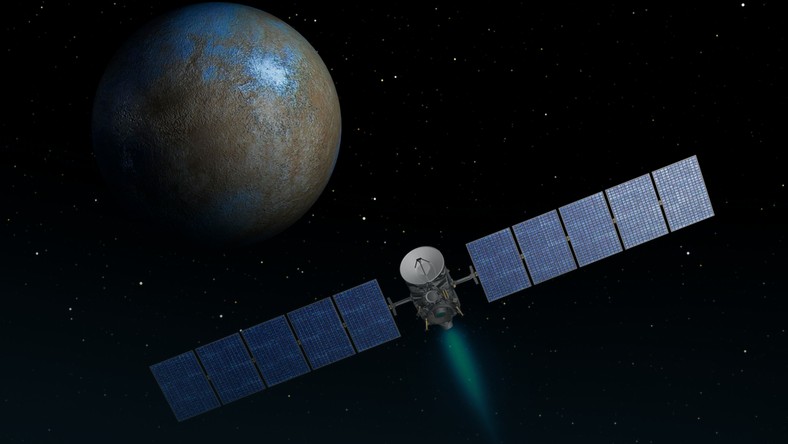
Photo: Reuters
The probe entered orbit Ceres Ceres
Ceres with a diameter of 950 km, is the so-called first. dwarf planets, which will be sent closer examined by a space object from Earth. Previously probe asteroid Vesta Dawn examined.
– We are very excited. We have so much to do over the next 1.5 years. We are on a stable orbit, we have the reserves and we are determined to achieve their goals – said Chris Russell of the University of California, who heads the research program of the probe.
The researchers hope that Ceres will provide information about the origins of the solar system approx. 4.5 billion years ago.
Even from a distance of Ceres scientists intrigued by the mysterious two very bright spots inside the crater with a width of 92 km in the northern hemisphere asteroids. According to one hypothesis may be the remains of the impact of Ceres surface of an object that caused the visibility of ice beneath the rocky surface. The researchers speculate that, by a layer of rocks on Ceres is the ice, and perhaps even water.
– Both Ceres and Vesta are, we believe, the proto-planets. They were to form larger celestial body, as it happened in the case of the Earth and other planets, but the process was halted for some reason. Standing out in this way a kind of “time capsules” that store information from the very beginning of the formation of the solar system – said Dr. Carol Raymond of NASA’s Jet Propulsion Laboratory.
Dawn 7.5 years needed to reach the plantoidy. Over the next month inspectors from Earth orbit probes make adjustments to the end of April able to join the study. The program envisages that the progress of the study’s orbit will be gradually reduced so that she found at an altitude of only a few hundred miles above the surface of the asteroid.
The probe is to conduct research for at least 14 months. As fuel depletion, the probe will lose the opportunity to conduct research and directing the antenna toward Earth. Will continue to revolve around Ceres, but do not fall on the surface for at least the next 100 years.
(JM)
No comments:
Post a Comment